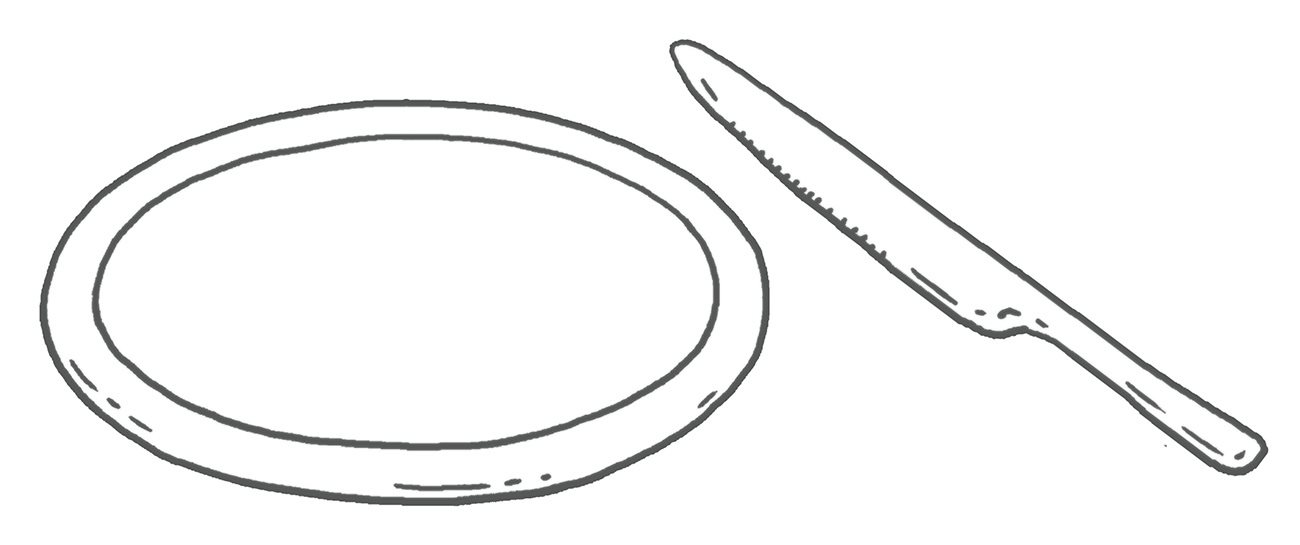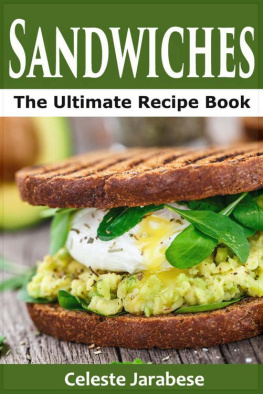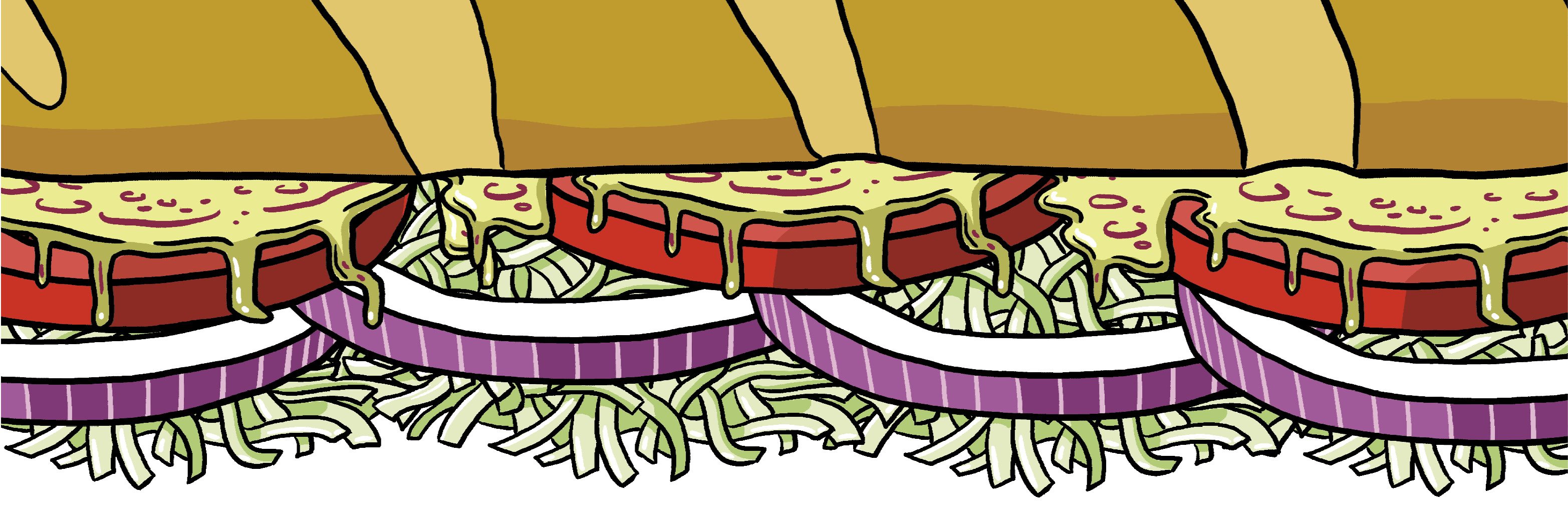TO MY DAD, WHO TAUGHT ME THE BEAUTY OF A GREAT LUNCH SANDWICH, AND TO MY MOM, WHO STILL MAKES ME SANDWICHES NOW. AD
TO THE SAUCEMAN. SORRY THERE ISNT MORE RANCH DRESSING IN HERE. BL
INTRODUCTION
( AKA: what is a sandwich)
What is a sandwich? According to the United States Department of Agriculture, the Product must contain at least 35 percent cooked meat and no more than 50 percent bread. The dictionary is slightly more open-minded, describing a sandwich as two or more slices of bread or a split roll having a filling in between, meaning no meat required! (Good news for vegetarian sandwich-lovers everywhere!)
For our purposes, a sandwich is whatever you make of it! But no matter what, a great sandwich starts with the basics the ingredients. Bookend your kitchen creation with the bread of your choosing wheat, white, rye you name it! But dont forget that whats between the bread is just as important meat, cheese, and toppings can make or break a sandwich.
The beauty and genius of a delicious sandwich is that YOU as the chef and creator can make it anything you want it to be. And with this guidebook, youll learn how to build the best sandwiches ever.
TOOLS
Making a sandwich is half the fun obviously the main event is eating it! Its also easy. All you need are a few key tools:
These will help you out too:
PLATE AND KNIFE
Whether youre slicing bread, vegetables, or other ingredients, knife safety is a key component of cooking and one of the first steps in becoming a sandwich-making superstar.

- Start with adult supervision. If youve never used a sharp knife before, its good to have a grownup around to help you.
- Make sure youre at the right height. The countertop or cutting surface should be about waist-high. That way you can see what youre cutting. (Grab a stool if you need a boost!)
- Get a good cutting surface. Using a clean cutting board is best for chopping, slicing, and dicing.
- Make sure youre using a sharp knife. Dull knives are actually more dangerous because you have to apply more pressure in order to cut.
- Hold your knife correctly. Use your dominant hand to grip the handle of the knife, keeping your fingers behind the bolster. (Thats the thick part of the knife between the handle and the blade.) This is called a handle grip. Once youre more experienced, you can try the blade grip gripping the knife with your thumb and index finger in front of the bolster.
- Keep your other fingers out of the way. Make sure the hand holding whatever youre cutting is far enough back from the blade of the knife. Try folding the tips of your fingers under, so your knuckles are bent and facing out, on your non-moving hand.
CHEFS KNIFE
This multipurpose knife comes in several different sizes and is good for a variety of kitchen-related jobs, including slicing and chopping vegetables, meat, and other ingredients.
BREAD KNIFE
A longer, thinner knife with a serrated blade. The teeth on the blade make slicing through bread without squishing or tearing easy. Serrated knives are also good for slicing tomatoes.
SANDWICHES
LEVEL 1 PLATE AND KNIFE
PB&J
(Peanut Butter & Jelly)
Peanut butter and jelly sandwiches more commonly known as PB&Js are a sandwich staple around the country. Chances are good that youve eaten at least a few in your lifetime. And while a PB&J might sound basic, its anything but. The sweet jelly combined with the sticky, savory peanut butter make this classic sandwich practically irresistible.
THE HISTORY OF THE PB&J
PB&J sandwiches may be a lunchbox staple in schools across the country, but that wasnt always the case. In fact, peanut butter used to be considered a delicacy. In the early 1900s it was served at upscale parties and fancy tearooms in New York. (Think peanut-butter-and-pimento and peanut-butter-with-watercress sandwiches.)
It wasnt until 1920 that the price of peanut butter dropped, and it became available to the masses, in part because sugar was added to the mix. Then, in the late 1920s, Gustav Papendick invented a process for slicing and wrapping bread, which meant kids (just like you!) could finally make their own sandwiches. Suddenly peanut butter sandwiches became a household staple.
Heres a brief breakdown of the life of a PB&J:
- 1884 Marcellus Gilmore Edson, a Canadian, invents and patents peanut paste, made by milling roasted peanuts between two heated surfaces.
- 1893 Peanut butter starts to gain popularity at the Chicago Worlds Fair.
- 1895 Dr. John Harvey Kellogg patents a process for creating peanut butter from raw peanuts. He markets it as a healthy protein substitute for patients without teeth.
- 1901 The first official reference to a peanut butter & jelly sandwich in the U.S. appears in The Boston Cooking-School Magazine of Culinary Science and Domestic Economics, thanks to Julia Davis Chandler.
- 1903 Dr. Ambrose Straub of St. Louis, Missouri, patents a peanut-butter-making machine.
- 1920s Sliced bread is invented! This invention takes sandwiches to the next level. Now kids can make sandwiches on their own.
- 1920s1930s Commercial peanut butter brands, including Peter Pan and Skippy, are introduced.
- 1930s Peanut butter sandwiches become popular during the Great Depression, when many people needed a hearty, filling meal on the cheap. Peanut butter, which is packed with protein, became a more affordable substitute for meat.
























